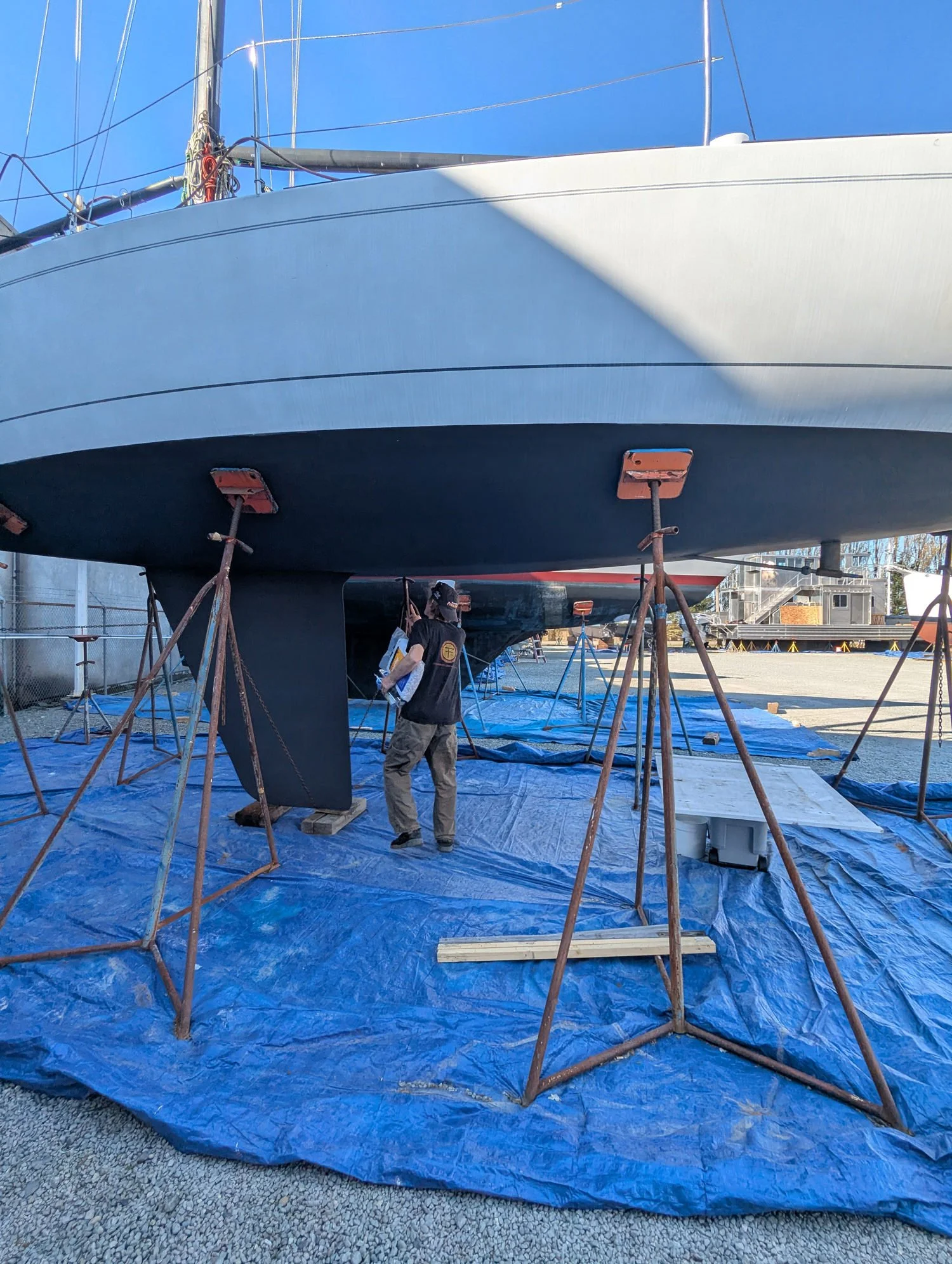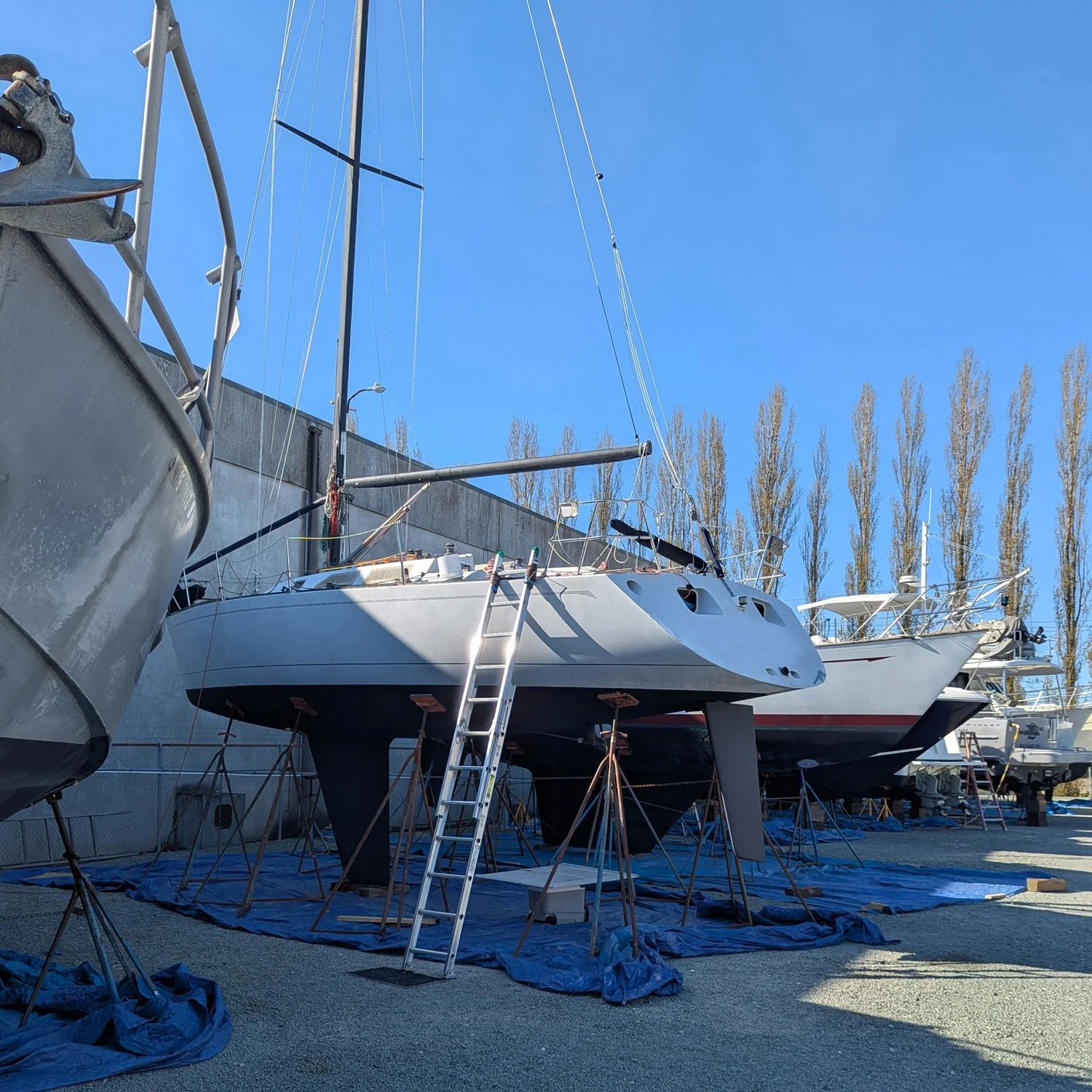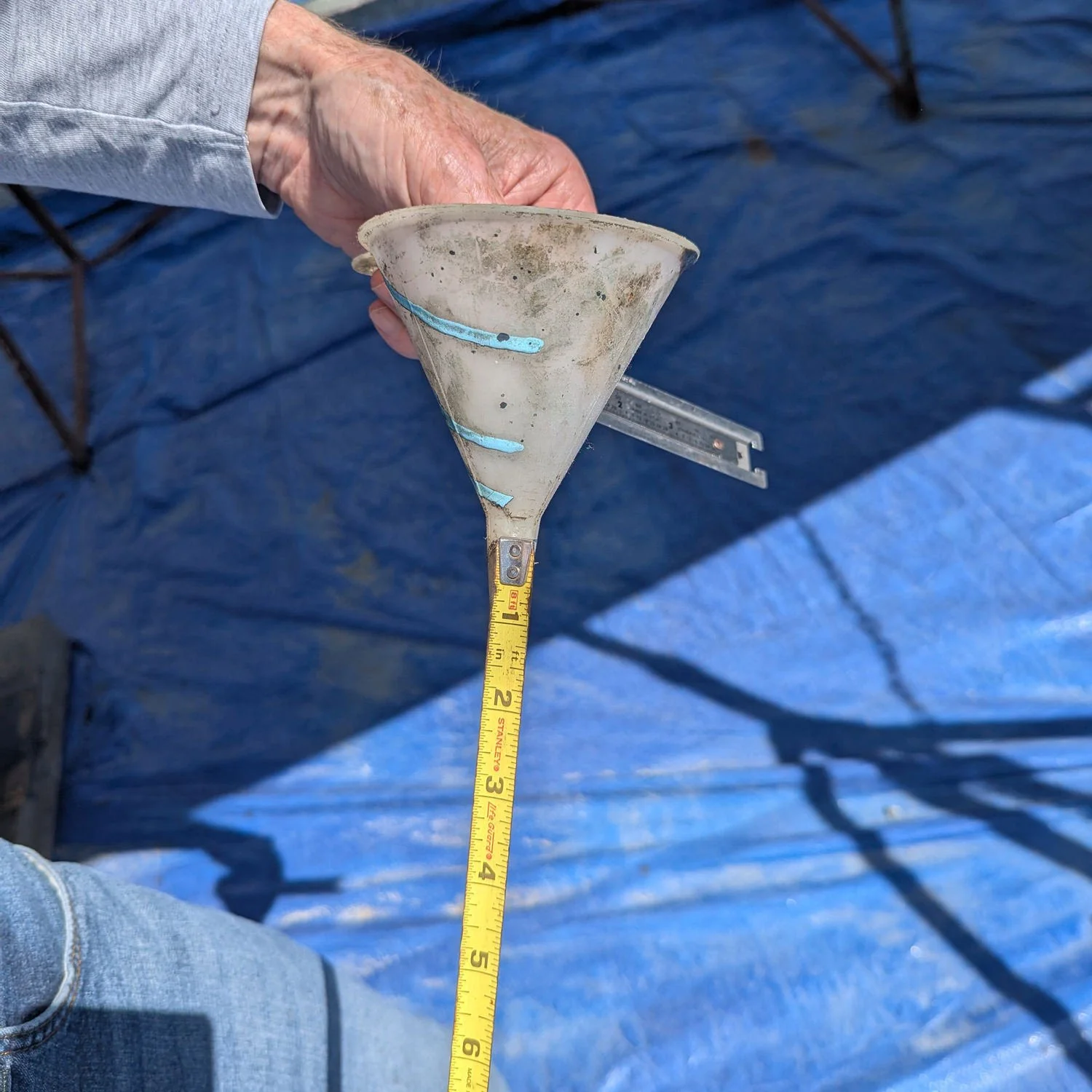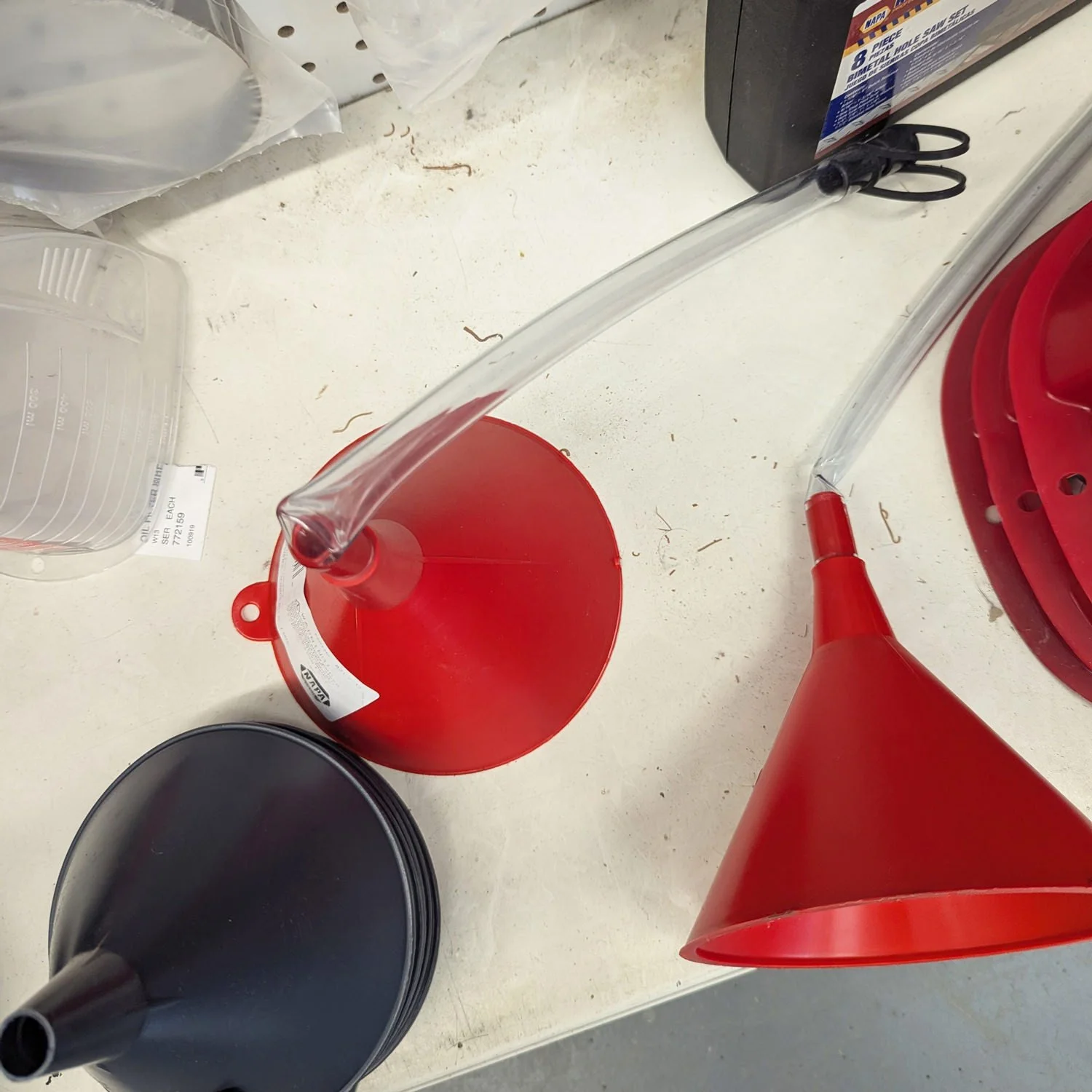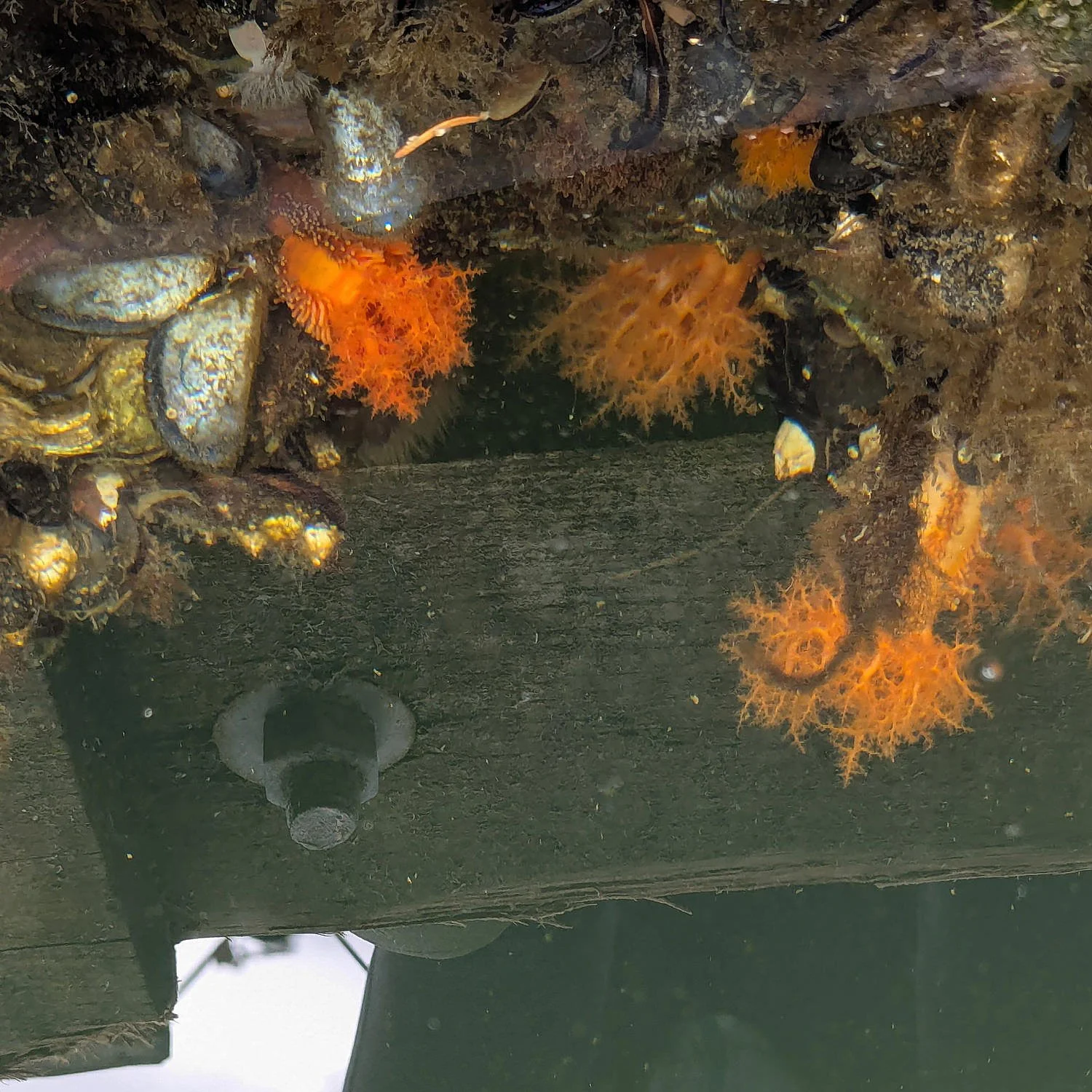Launching the (40-Year-Old) Sailboat
The new propeller was my first clue. My partner decided to bring his 40-year-old sailboat out of storage.
About five years ago, he had his boat pulled from the water and placed in dry storage, on the hard, so we could travel on land. I have been so grateful for that.
But I could also see how hard it was for him to live without his boat, even temporarily. I was feeling guilty that he’d taken a break from what is like oxygen to him—sailing.
My partner grew up learning how to build and sail wooden boats from his beloved elders. He loves boats and sailing so much.
He also grew up on a mountain, skiing, where he was taught to build and embrace alternative off-grid living, stoke fires, garden, and fix things in his dad’s shop.
He loves to be with his family, helping them. That’s how he feels close to his loved ones. That’s what they all love. That’s how they all feel love.
And I completely support all of that. I think it’s beautiful. Even if I’m elsewhere.
So when I told him I wanted to remain in the Vancouver, BC, region this winter and spring, he went down south without me to begin his boat project and to make trips to loved ones.
I was so happy for both of us. I loved that I could experience missing him. Spending time away, working independently, makes us excited to see each other again. I love that feeling.
Also, whether he’s next to me or far away, we remain close to each other through all forms of communication.
His first step in bringing his sailboat out of storage was to have it moved to the working area of the boatyard. That’s where my partner could pull apart, inspect, and fix anything on his boat.
He needed to do this hard work to get his boat safely back on the water—and to pass a survey that his insurance company requires every so many years. Like when a boat turns 40.
My partner thought he would have his boat mostly ready in two weeks by working ten-hour days straight. A month later, he was still in the working yard when his back gave out.
So I traveled down south to help him in the boatyard. He sent me on errands to boat shops. He told me what to look for, ask for, measure, order, pick up, and bring back to him.
He stayed with his sailboat, still working 10-hour days, resting his back between tasks.
I usually called him from the boat shops to ask if he needed any of the cute things I saw on the shelves. No cute things were needed.
Six weeks after he started his boat project, while working through cold, wind, rain, and hail, he was far enough along that he wanted to put his boat in the water to see what it would do.
Would it float? Would the engine start? Would he need the yard to haul it out again? How much more work would be required to ensure it would be reliable anywhere he might sail it?
He wondered these things aloud, which was anxiety-inducing for me (because I worry, I want everyone and everything to be safe, and because I know nothing about boats).
So, of course, I took whatever he said literally, and then I assumed I must find solutions to everything he was pondering (yet I know nothing about boats).
As well, this is not my boat. I cannot know solutions to any of this, I reminded myself.
So I tried to practice stepping back, pretending I heard little, allowing the situation to unfold as he chose. This was his adventure, I’d tell myself. Yet he hates it when I say that.
He wants me to feel like it’s our boat. He wants me to feel like it’s our adventure. He wants me to hop aboard and not worry about anything.
But when I hear him ponder all kinds of life-threatening outcomes if such and such isn’t handled just so, and I have no boating skills to reference, my system is on full alert.
He must have the extreme gene, I tell myself. He truly enjoys high-risk activities. I saw a news report about that once. It explained everything.
As a kid, he sailed off into the wild. He sailed to Hawaii using Celestial navigation. He raced sailboats on his college sailing team and across the ocean. He worked for the America’s Cup.
He’s helped build, rig, and repair countless boats, for fun and for work. He’s raced yachts 24/7, navigating all the (nighttime) perils when no engines were allowed. He has loved it all so much.
So I reminded myself of his wealth of experience regarding the endless things that might go wrong for him at any given moment. He is a captain. He is the captain.
At the end of a long rainy day, the yard splashed my partner’s boat into the water. Once they all saw it remain afloat for a minute or two, they called it good and locked the gates for the night.
My partner was still curious about what might happen next. I watched him ponder his next step, deciding the best way to get his boat over to the guest moorage dock before dark.
He didn’t want to start the engine until the next day, after his brother arrived. They needed to ensure the engine was in proper order before they turned the ignition for the first time in five years.
So, with no wind and no engine, my partner somehow sailed his boat through the marina, over to the guest dock, and tied up. It was such a beautiful sight.
My partner admires his brother’s mechanical skills so much. The presence of his brother on the boat the next morning brought so much comfort and joy.
They were amazing together. They tended to the engine, after which it started right up.
Then the boys motored the boat over to another marina as a safe spot to rest the boat for a night or two, take a close look at everything again, and decide what was next.
If engine work was deemed necessary, engine parts could be obtained near that marina. Miraculously, no more engine work was necessary.
My partner was then free to sail off into the yonder for the summer, to anchor out or tie up at buoys wherever he chose, where I planned to meet up with him along the way.
That was what I encouraged, anyway, since all previous plans had changed due to the extended work needed to launch the boat.
Ironically, that was the exact moment my partner decided there was much more work he truly wanted to complete on his boat (and dinghy) before sailing anywhere.
We were living in the moment.
I did the one thing I could do—I called the marina where he’s been on a waitlist for two years (waiting for long-term moorage), to see if his slip might be available soon.
Mercifully, he was second on the list, but the marina said it was still a three-to-six-month wait.
I then asked if they happened to have any subleases available.
The marina paused. A boat had literally just left for Alaska for the summer, and their sublease had literally just fallen through … at this very last moment. That single slip was available.
Two days later, my partner reached it.


